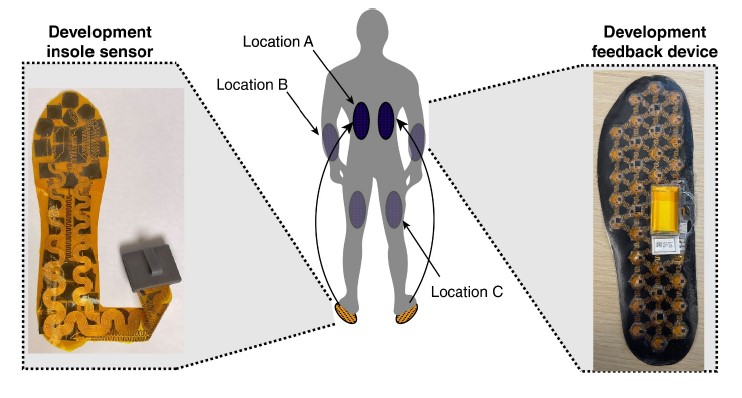Overview
Body
Plantar sensation is crucial for gait, balance, and posture, and its loss contributes to movement disorders in conditions like multiple sclerosis, diabetes, stroke, and spinal cord injury. Current diagnostic methods use pressure sensor arrays to assess gait deficiencies, with wireless insole technology extending data collection beyond clinical settings. Building on these advances, we are investigating sensory substitution as a potential solution to restore lost plantar sensation and improve outcomes for affected individuals.

The purpose of this study is to test the use of a system that can read the pressure pattern on the foot and “map” that pattern to another part of the body (i.e., legs, arms, or back). We want to see if people can learn to change the pressure pattern in their feet based on what they feel from another part of the body to avoid pressure patterns that can lead to movement deficiencies and foot inflammation.
Subject Population
Body
- Age 18 to 85 years
- Able to ambulate 10 meters with or without assistance
- Able and willing to give written consent and comply with study procedures
Study Personnel
Mentioned Profile

Arun Jayaraman, PT, PhD
Executive Director, Technology & Innovation Hub (tiHUB); Director, Max Näder Center for Rehabilitation Technologies & Outcomes ResearchStudy Partners
Funding Source
Body
Querrey Simpson Institute for Bioelectronics
Participation
Body
Want to participate in this study? Fill out this interest form.
